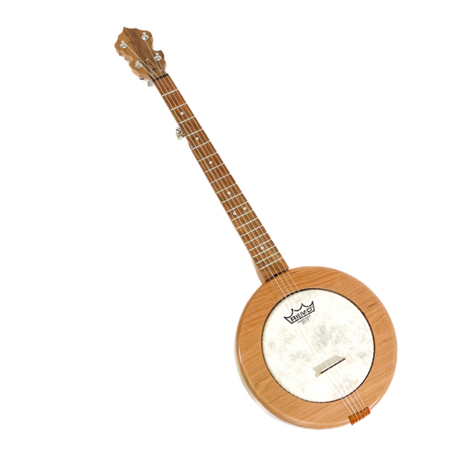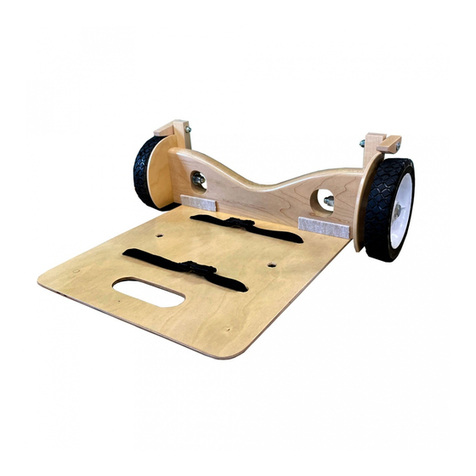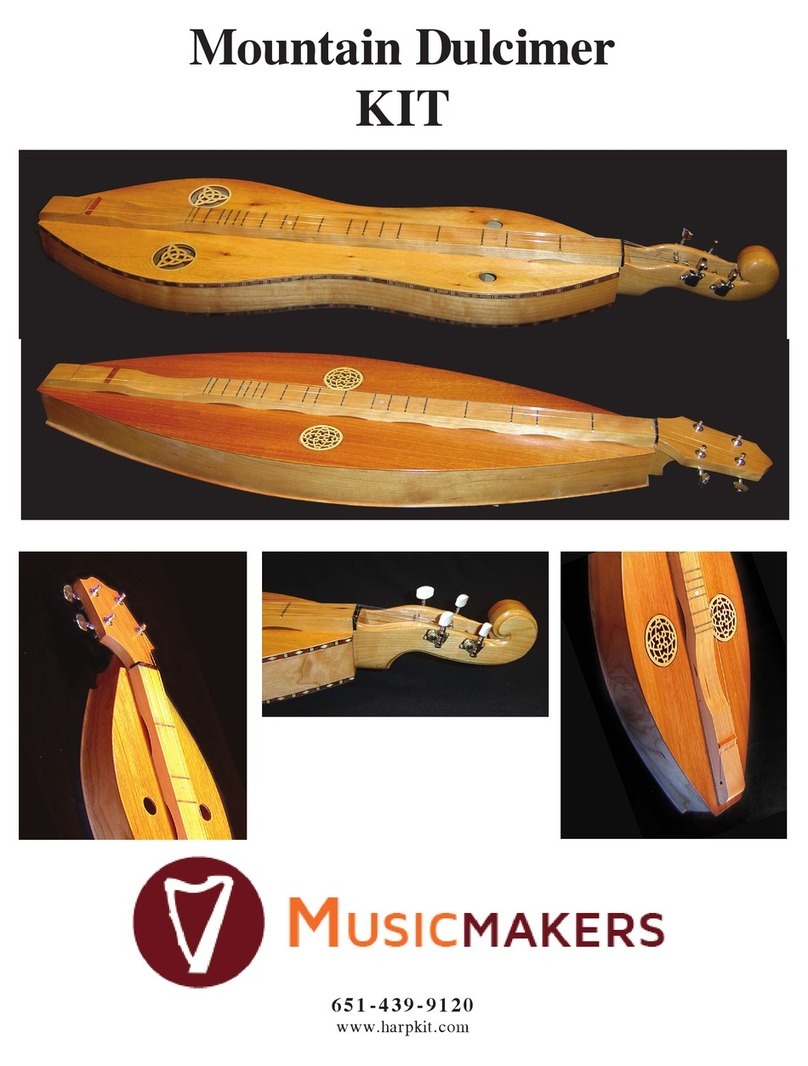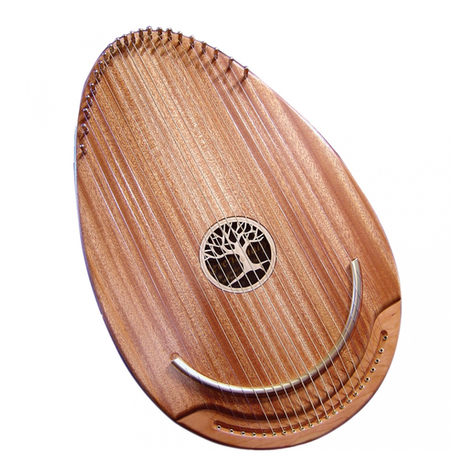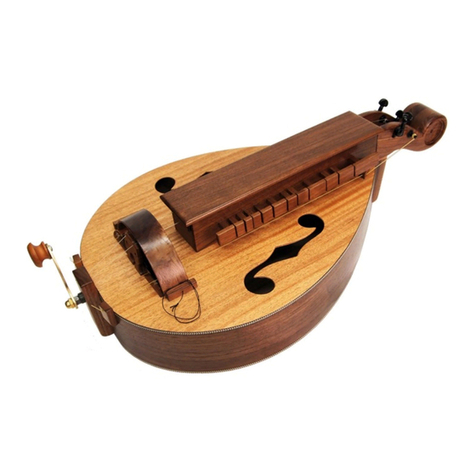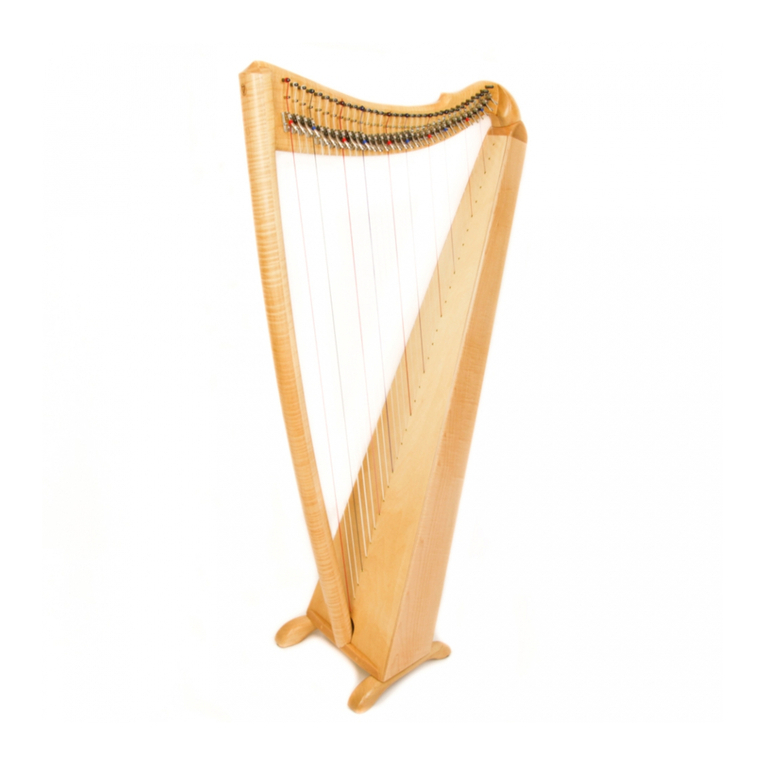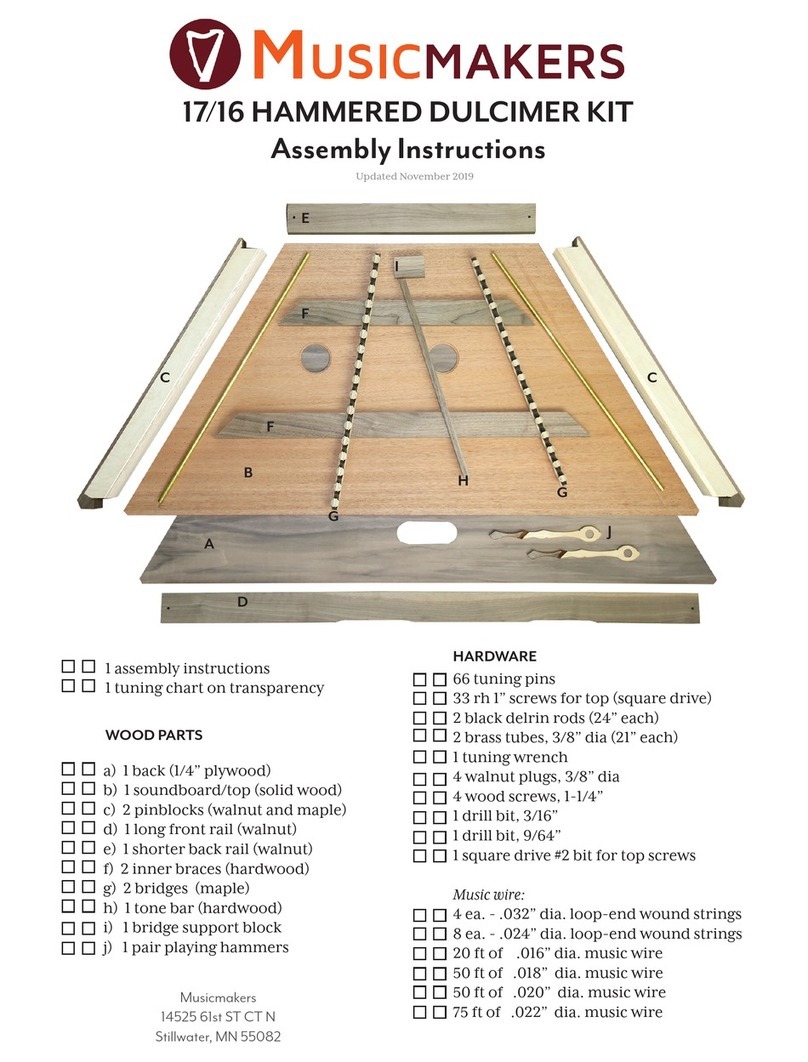
ww.harpkit.com 9
SANDING AND FINISHING
____24. Give Strumbly a final sanding before applying a finish. Take your time to do a nice job -- it
will pay huge dividends toward the cosmetic appearance of the instrument when it is finished.
Start with 180 grit sandpaper and sand off all the machine marks left by our equipment, as
well as any glue spots you might have added during construction. Dried glue may not show
much now, but it will stick out like a sore thumb under the finish. Work your way through
finer sandpaper if you wish, but many people are satisfied with how smooth the wood is with
180 grit paper.
Now you’re ready to apply the finish of your choice. We’ve listed several options below. Don’t
forget to put some finish on the BRIDGE.
STAINS or DYES -- These are coloring agents and should only be used if you want to change
the natural color of the wood. We usually do not apply stains to our projects, especially when
they are made with naturally beautiful hardwoods such as cherry or walnut. These woods
look best with a clear finish. But, if you want to color the wood, your staining should be accom-
plished before applying a surface finish such as oil, varnish, or lacquer.
OIL or WAX -- Be very cautious about using an oil or wax finish. If the this type of finish
gets into the tuning pin holes, it will act as a lubricant, and you may have trouble keeping the
instrument in tune. Oil finishes will give your wood a low luster appearance, bringing out the
natural color of the grain, but it tends to soak into the wood and appear dry and “thirsty” after
awhile. Some people are fond of a beeswax finish for a natural look, but it can show water spots
if it gets wet, so you may end up needing to re-wax or touch up the surface in the future.
POLYURETHANE VARNISH -- Any regular varnish will work fine on this project, but we
think a wipe-on (gel) polyurethane is the easiest to apply because it does not drip or sag -- just
wipe on a thin coat and wipe off the excess. Our complete finishing kit includes a half-pint
can of satin gel polyurethane (instructions printed right on the can), plus sandpaper sheets,
and foam applicator for the first coat. The advantages of this finish are its simple application,
minimal odor, good durability, and deep, soft luster.
LACQUER -- Many professional instrument makers use lacquer for their finish. The most
readily available lacquer is called Deft Clear Wood Finish. It is best to purchase a can of liquid
to brush on as a sealer coat first, and then use an aerosol can of the same product to spray on
the final coats. The advantage of this finish is its quick drying time, but the disadvantage is the
strong odor of the toxic lacquer fumes.
GENERAL FINISHING GUIDELINES

